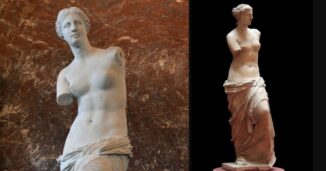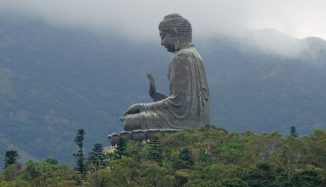90 years ago today, the architect Kisho Kurokawa was born. This brilliant mind was the co-founder of the Metabolist architectural movement, which sought to fuse the post-war architecture of the island with organic forms to create structures in harmony with a sort of Marxist vision of humanity in the future. Kurokawa designed and built dozens of large structures across Asia, including the Nakagin Capsule Tower in Tokyo, Central Plaza 1 in Brisbane, Australia, and Lane Crawford Place in Singapore. READ more and see more buildings… (1934)

Kurokawa was co-founder of the Metabolist Movement, as mentioned above, which became more of a futurist club rather than an artistic trend. The Metabolists grew in popularity to a large degree, and became common skyline builders from Kuala Lumpur in Malaysia to Astana in Kazakhstan.
Kurakawa himself was extremely international, and designed buildings in 13 countries, including high rises, airports, convention centers, museums, stadiums, and medical centers.

Attention to detail was critical in his philosophy. Japan was a country that moved from a non-industrial to a fully industrial economy in less than 50 years, during the Meiji Restoration. This sharp jump from producing goods by craftsmen to industrially realized production was so rapid that the deep-rooted tradition of fine craftsmanship as a statement of the creator did not disappear.
As a result, the Japanese maker continues to be instilled with a fastidious preoccupation for fine details, which can be seen in contemporary architecture, art, and industry. The attention to detail, an integral part of Japan’s tradition, forms a uniquely indigenous aesthetic which Kurakawa remained adamant needed to be captured in his architecture.
MORE Good News on this Day:
- Hank Aaron hit his 715th career home run, surpassing Babe Ruth’s 39-year-old record (1974)
- Frank Robinson, one of baseball’s most underrated players debuted as Major League Baseball’s first black manager – joining the Cleveland Indians (1975)
- Clint Eastwood became the mayor of Carmel, defeating an incumbent in the election to lead his small seaside city in Northern California, and add many four-way stop signs to help ease traffic congestion (1986)
- Suzan-Lori Parks became the first African-American woman to win a Pulitzer Prize for drama for her play “Topdog/Underdog” (2002)
- Construction was completed on the world’s first building to integrate wind turbines – the Bahrain World Trade Center in Bahrain (2008)
- The New Strategic Arms Reduction Treaty was signed by President Obama and Russian President Medvedev in Prague, to reduce each nation’s nuclear arsenals to their lowest levels in more than a half-century (2010)
47 years ago today, the debut album by The Clash, widely celebrated as one of the greatest punk albums of all time, was released in the UK after being recorded during three-weekend sessions. It cost just £4,000 to produce, but that year was called “one of the most important albums ever made,” and sold 500,000 copies. Most of the songs were written by guitarist and singer Mick Jones and Joe Strummer, with the exception of Police and Thieves which was a cover.

Later in 1979, The Clash released The Clash in the U.S. with a significantly altered track listing, excluding some of the deeper cuts and adding many singles they had released before, such as I Fought the Law, Complete Control, and (White Man) In Hammersmith Palais.
Following the UK release, Tony Parsons wrote in the New Musical Express, “Jones and Strummer write with graphic perception about contemporary Great British urban reality as though it’s suffocating them … Their songs don’t lie … The Clash have made an album that consists of some of the most exciting rock’n’roll in contemporary music.”
Spin ranked the album at number three on its 2001 list of the “50 Most Essential Punk Records”, calling it “punk as alienated rage, as anticorporate blather, as joyous racial confusion, as evangelic outreach and white knuckles and haywire impulses”. (1977)

204 years ago today, one of the most famous works of ancient Greek sculpture was discovered—the Venus de Milo. The iconic statue depicts Aphrodite, the Greek goddess of love and beauty, although some scholars claim it pays homage to a sea goddess who was venerated by people who lived on Milos in the Aegean Sea.
It was said to have been discovered by a peasant named Mr. Kentrotas beneath a ruined chapel on the edge of his property in Trypiti, where he was gathering stone. He found a buried cavity some 4 × 5 ft deep where the statue was found in two large pieces (the upper torso and the lower draped legs) along with fragments of the upper left arm and a left hand holding an apple.
A work by Alexandros of Antioch created sometime between 130 and 100 BC, the marble sculpture is slightly larger than life—6 ft 8 in high—and is named after Aphrodite’s Roman name, Venus, and the Greek island of Milos, where it was discovered.
Today holding a prime spot in the Louvre museum in Paris, the classically draped Venus has inspired countless artists’ renditions in almost every medium and art form. (1820)
Happy Birthday to actress Robin Wright who turns 58 years old today.
 Known for her film portrayals as Buttercup, in The Princess Bride, and Jenny in Forrest Gump, she won a Golden Globe for playing the devious political wife on the critically acclaimed Netflix series House of Cards. (1966)
Known for her film portrayals as Buttercup, in The Princess Bride, and Jenny in Forrest Gump, she won a Golden Globe for playing the devious political wife on the critically acclaimed Netflix series House of Cards. (1966)
34 years ago today, Twin Peaks, the surreal horror drama series created by David Lynch premiered on ABC-TV. Featuring Kyle MacLachlan as FBI Special Agent Dale Cooper, the murder mystery earned 14 Emmy nominations and a devoted cult following. It only lasted two seasons, but Twin Peaks is thought to be among the greatest series of all time, and a landmark turning point in television drama.

With its narrative unfolding in the fictional town of Twin Peaks, Washington, the show employed a melodramatic portrayal of eccentric characters, a haunting soundtrack, and it pioneered the trend of accomplished cinematography now commonplace in today’s television dramas. The property was revived recently for a sequel, including a third and fourth season.
After becoming one of the most-watched television programs in the US, audience ratings declined in the second season after the main crime—the murder of homecoming queen Laura Palmer—was resolved, and subsequent storylines became more obscure causing the public to lose interest. Lynch directed the sequel season 3 and it premiered in 2017—and there is further interest in a season 4. (1990)
Today, Japan celebrates the fixed day of the anniversary of the Buddha’s birth. Born Siddhartha Gautama or Shakyamuni, the sage of Shakyas, he is the founder of Buddhism, the fourth-largest religion in the world. Visitors to shrines on his birthday take an offering of fresh spring cherry blossom flowers. This year, most of Asia will celebrate Buddha’s Birthday in early May, but Japan always marks the day on April 8th.
 As a prince in northeastern India, he lived a life of luxury until, at the age of 29, he saw an old man, a sick man, and a family mourning their dead. Like all Hindus, the prince believed in reincarnation. The thought troubled him that people had to return to this world to suffer again, so he left his wife, child, luxurious lifestyle, and future role as a leader of his people, to search for an end to suffering. Continue reading… (563–483 BC)
As a prince in northeastern India, he lived a life of luxury until, at the age of 29, he saw an old man, a sick man, and a family mourning their dead. Like all Hindus, the prince believed in reincarnation. The thought troubled him that people had to return to this world to suffer again, so he left his wife, child, luxurious lifestyle, and future role as a leader of his people, to search for an end to suffering. Continue reading… (563–483 BC)
For years he chose a life of extreme poverty. The story goes that he eventually collapsed from starvation after fasting for six years. Next, he turned away from the idea that poverty is the path to enlightenment and he decided that it is best to pursue a “Middle Way” between luxury and poverty, largely defined by moderation and meditation. At 35 he attained enlightenment (Nirvana) and assumed the title Lord Buddha (one who has awakened).
He defined 3 practices for gaining enlightenment, which may define the “Religion” of Buddhism:
- Sila: Virtue, good conduct, morality. This is based on two fundamental principles: The principle of equality: that all living entities are equal and the principle of reciprocity: This is the “Golden Rule” in Christianity — to do onto others as you would wish them do onto you.
- Samadhi: Concentration, meditation, mental development, which leads to personal freedom and helps us maintain good conduct.
- Prajna: Discernment, insight, wisdom, enlightenment. This is the real heart of Buddhism. Wisdom will emerge if your mind is pure and calm.
Albert Einstein said: “Buddhism has the characteristics of what would be expected in a cosmic religion for the future: it transcends a personal God, avoids dogmas and theology; it covers both the natural & spiritual, and it is based on a religious sense aspiring from the experience of all things, natural and spiritual, as a meaningful unity.”
Celebrations in Japan, Taiwan, and Korea include children pouring sweet tea (hydrangea leaf amacha) over the head of the statue of an infant Buddha because some believe it rained tea on the day he was born.
SHARE the Milestones, Memories, and Music…




















Buddha’s birthday
Happy Day! Nice story.
The Three Princile Aspects of the Path (as I know them from the book, same title by Geshe Sonoam Rinchen) in Tibetian Buddhism are:
1. The Wish For Freedom (renunciation from the suffering of this life)
2. The Alturistic Intention (generosity, kindness, and guru devotion)
3. The Correct View (compassion and wisdom unified with great love)
[…] Read the full story at https://www.goodnewsnetwork.org […]
[…] post Good News in History, April 8 appeared first on Good News […]
[…] Posted From: https://www.goodnewsnetwork.org/events060408/ […]